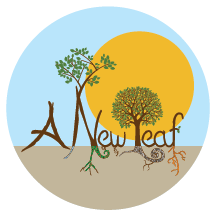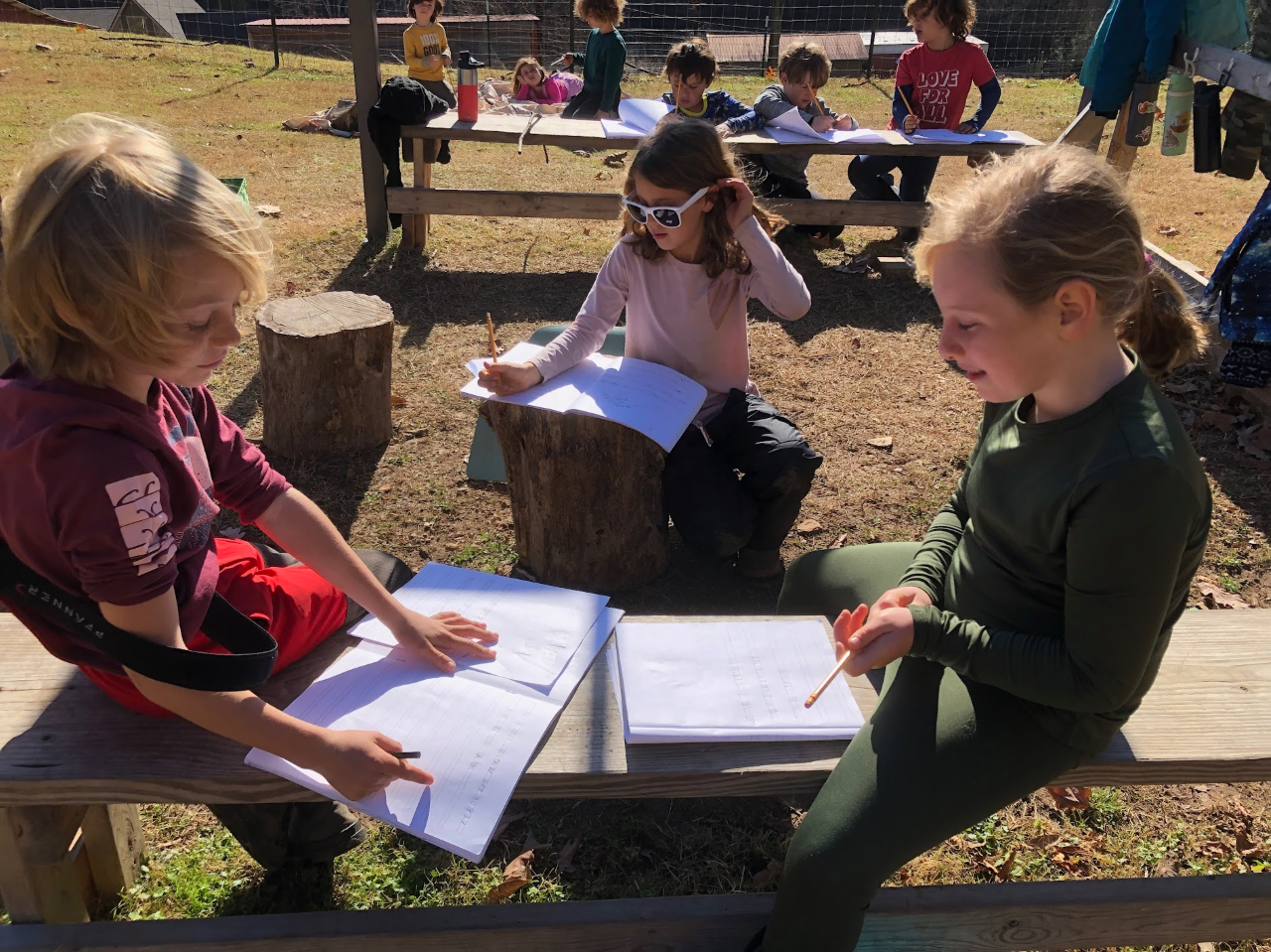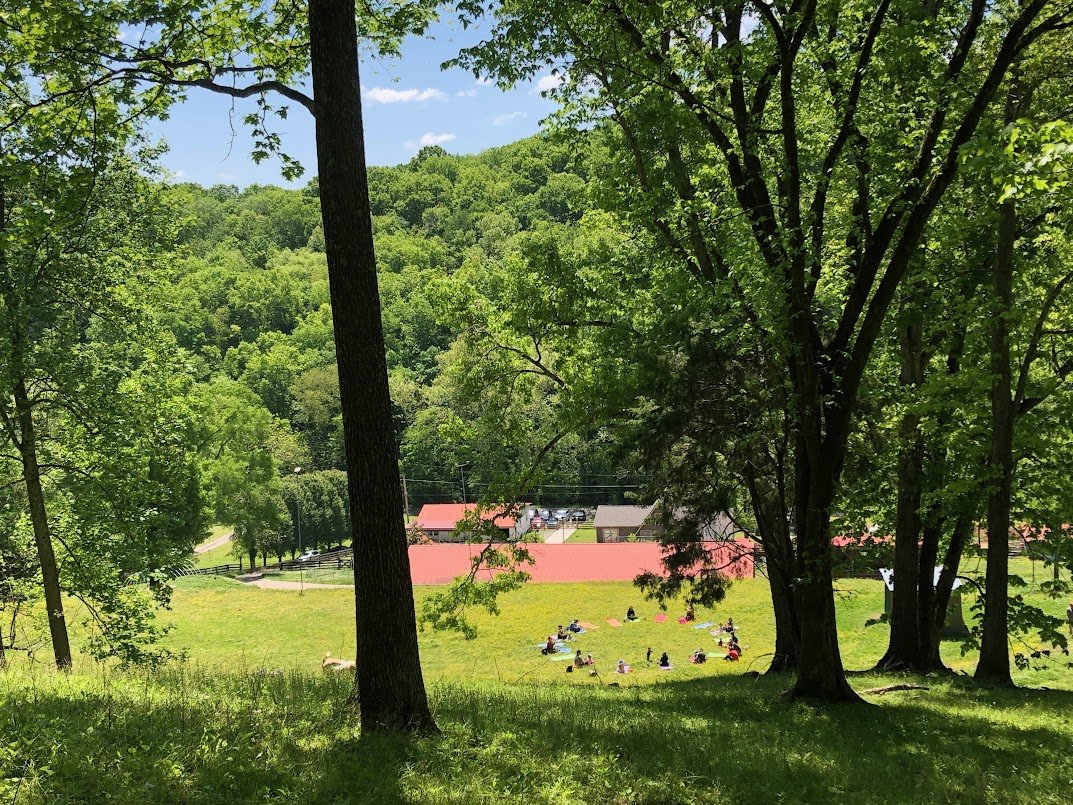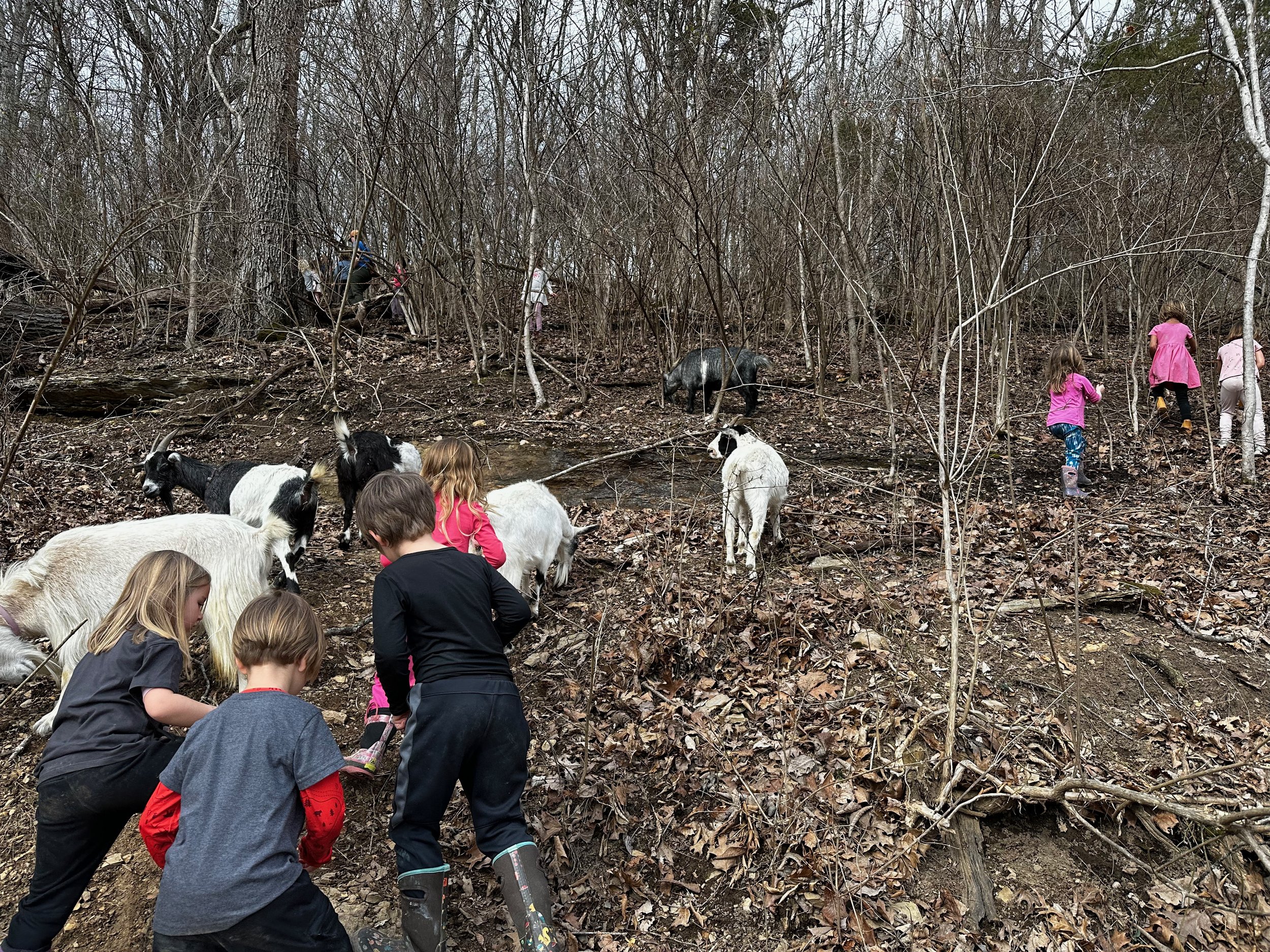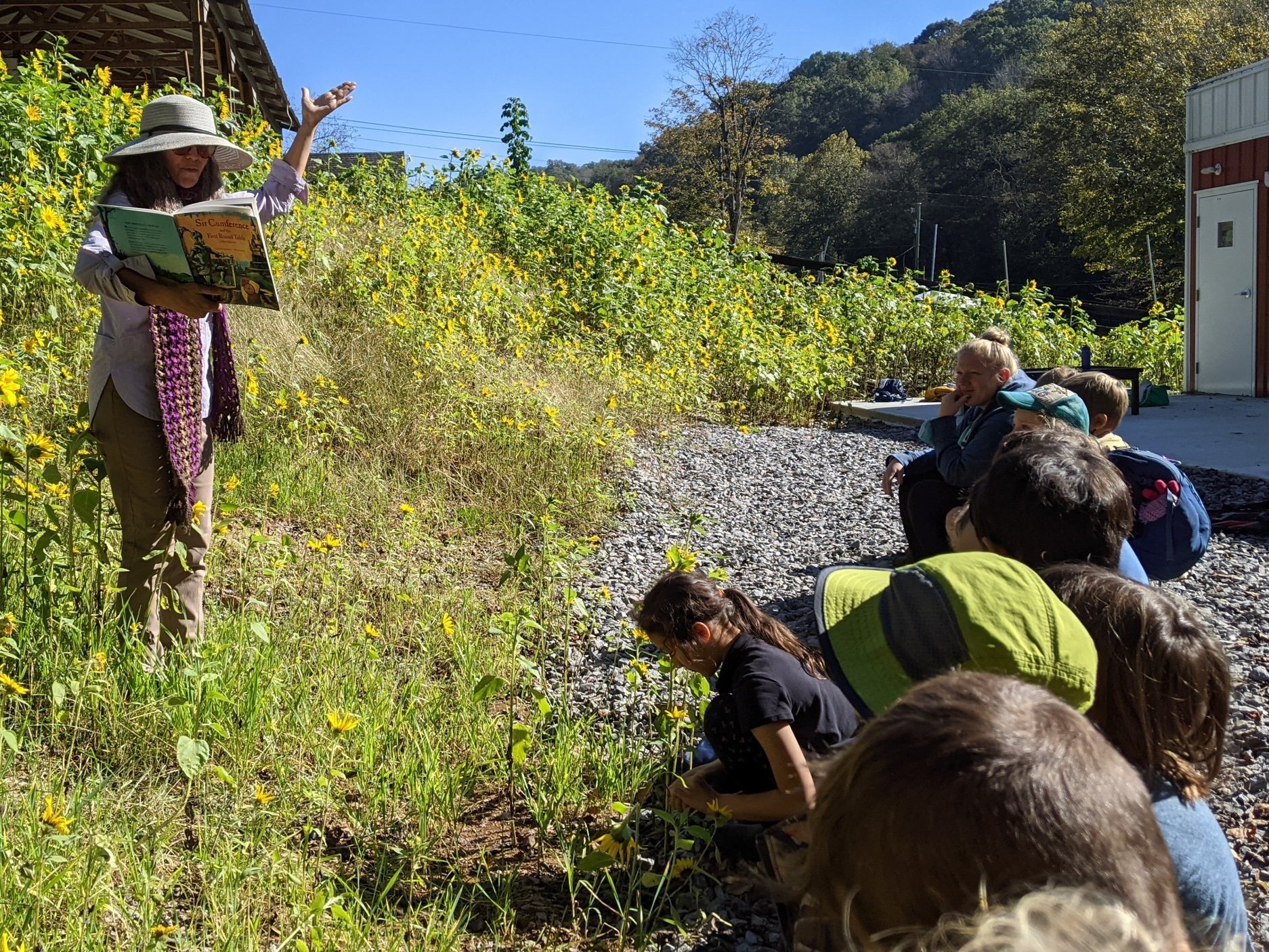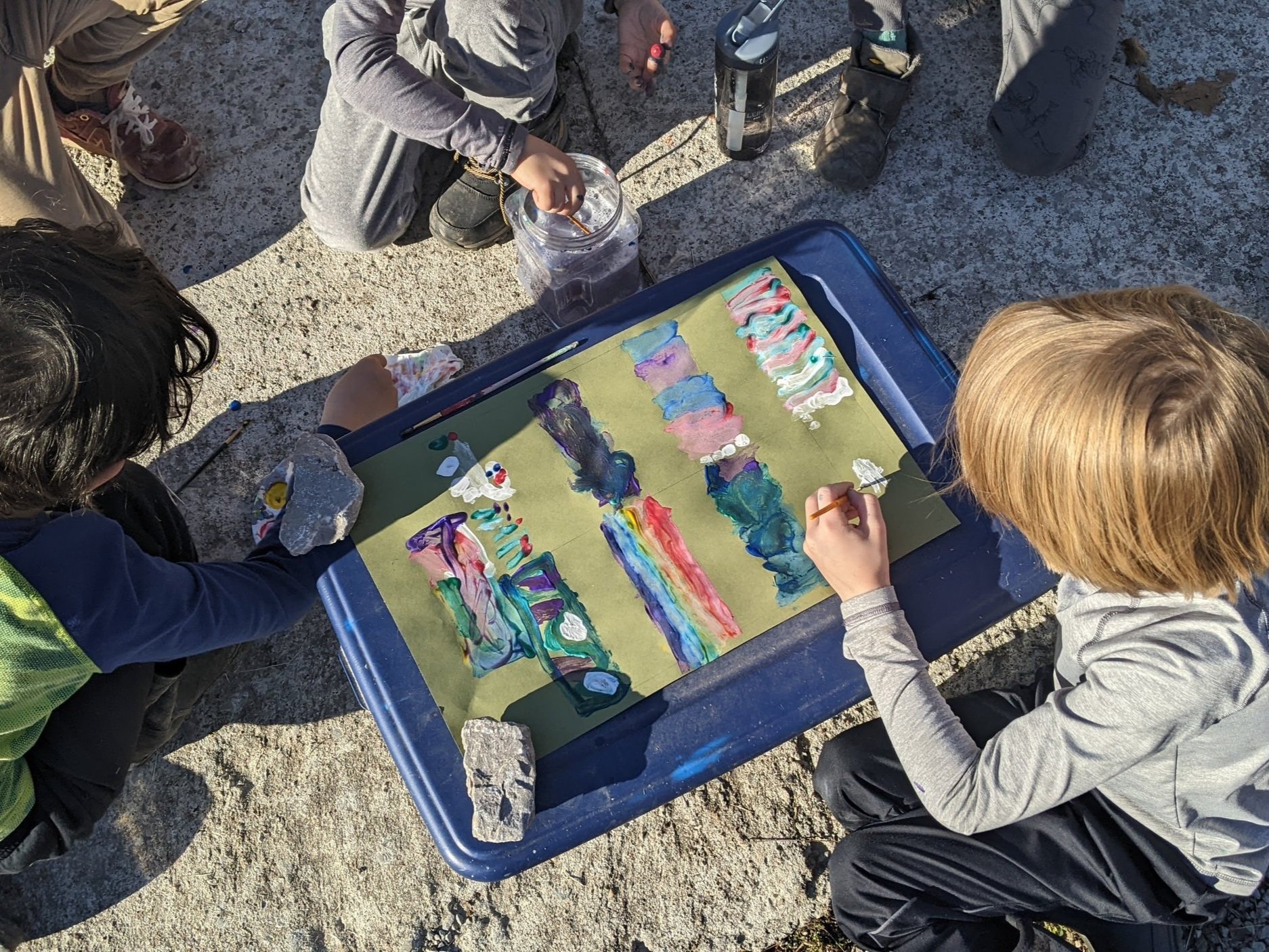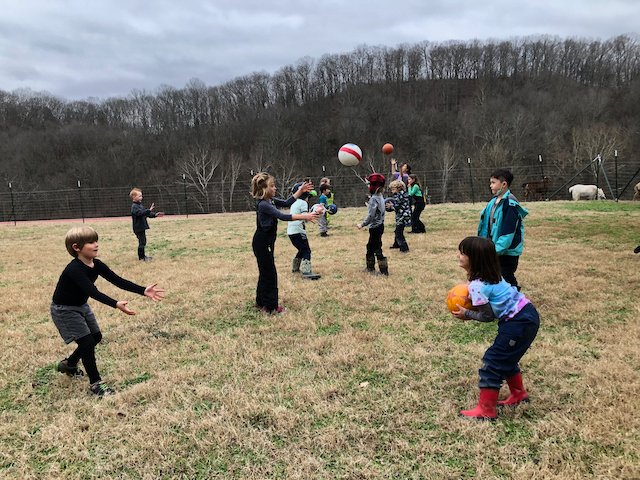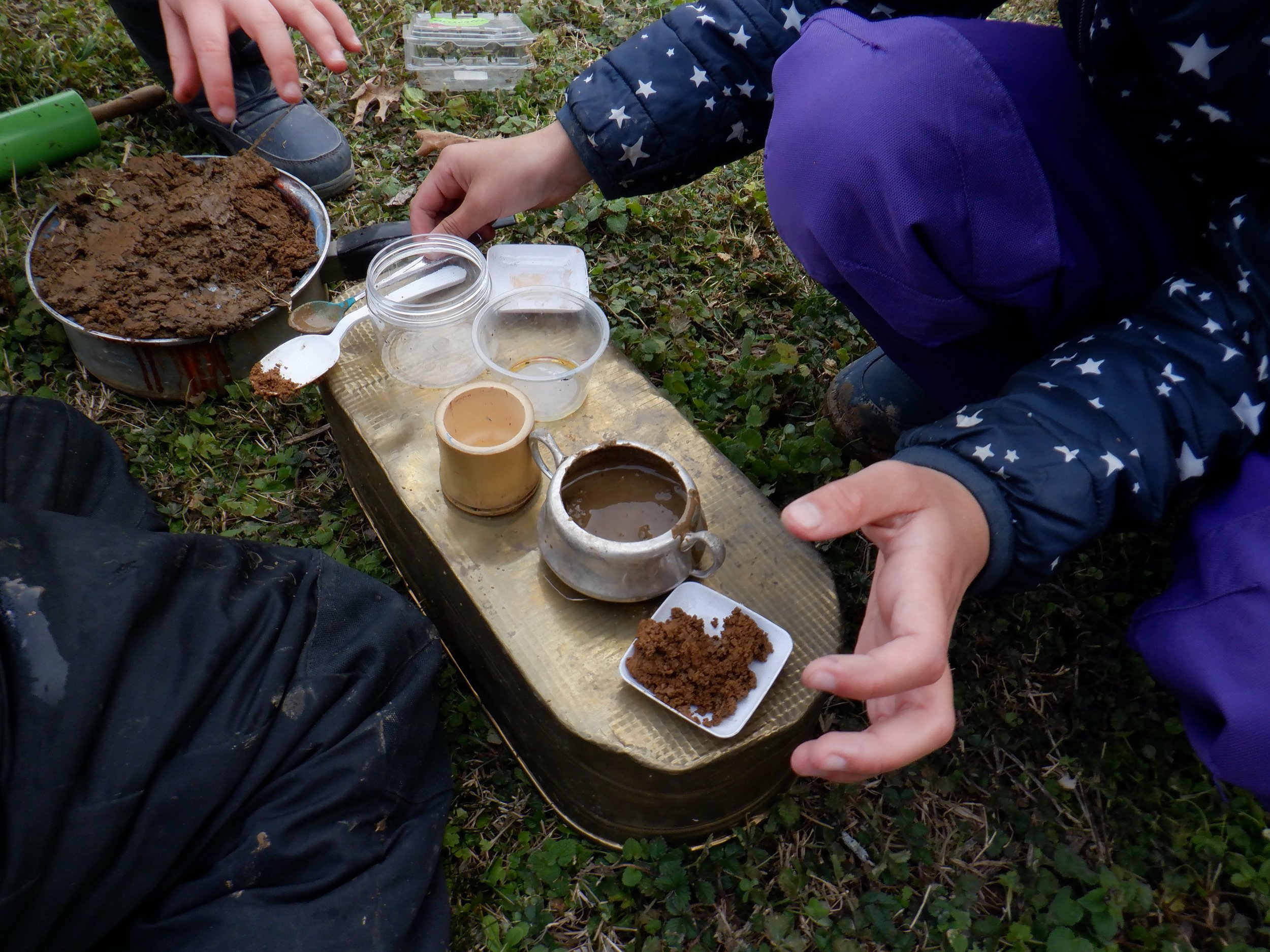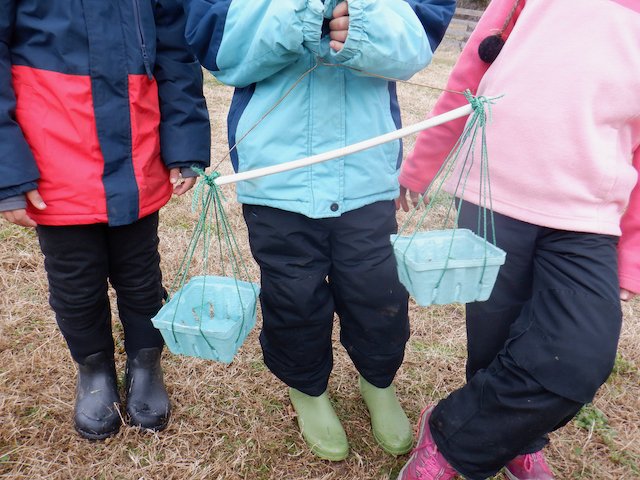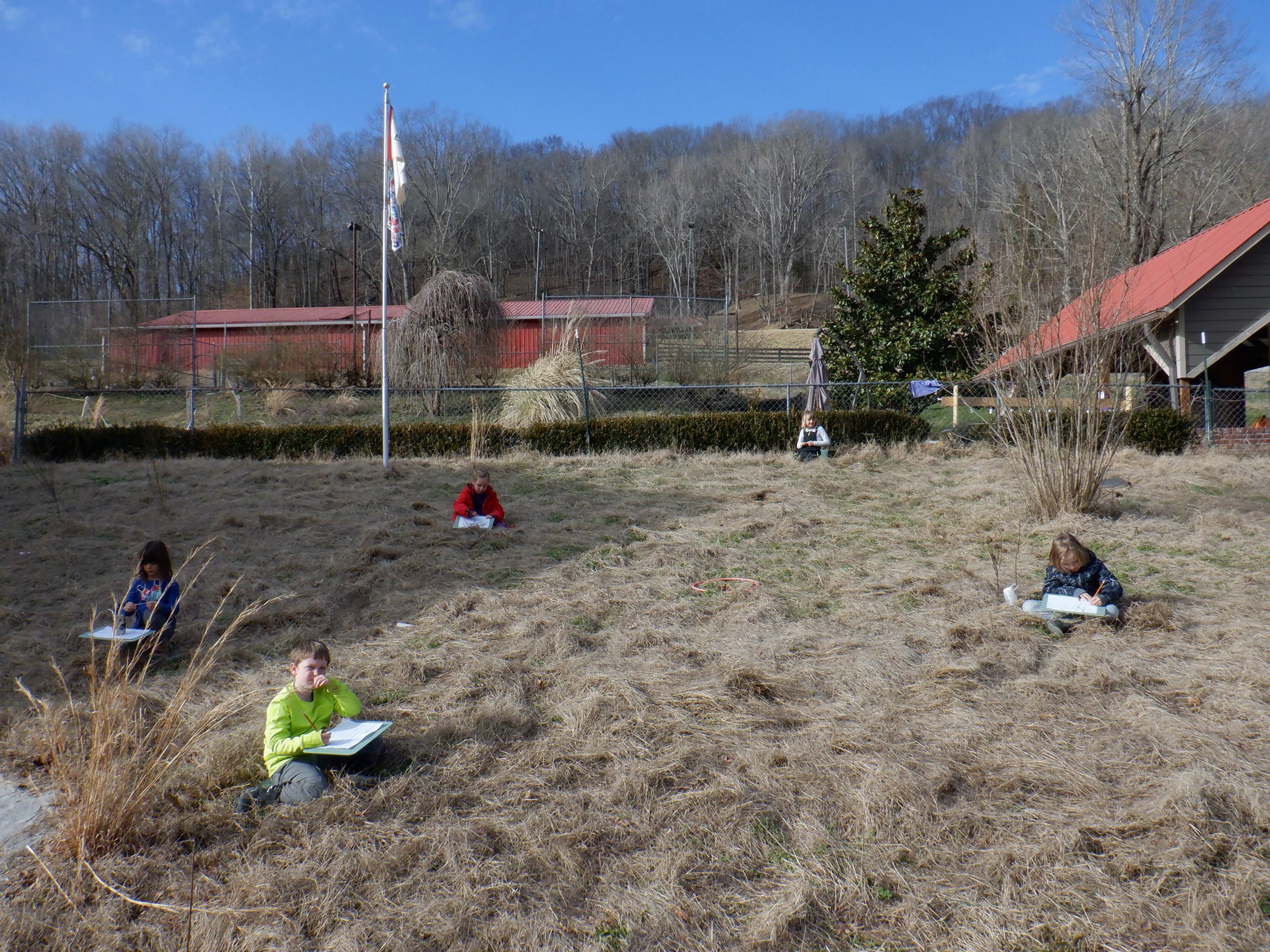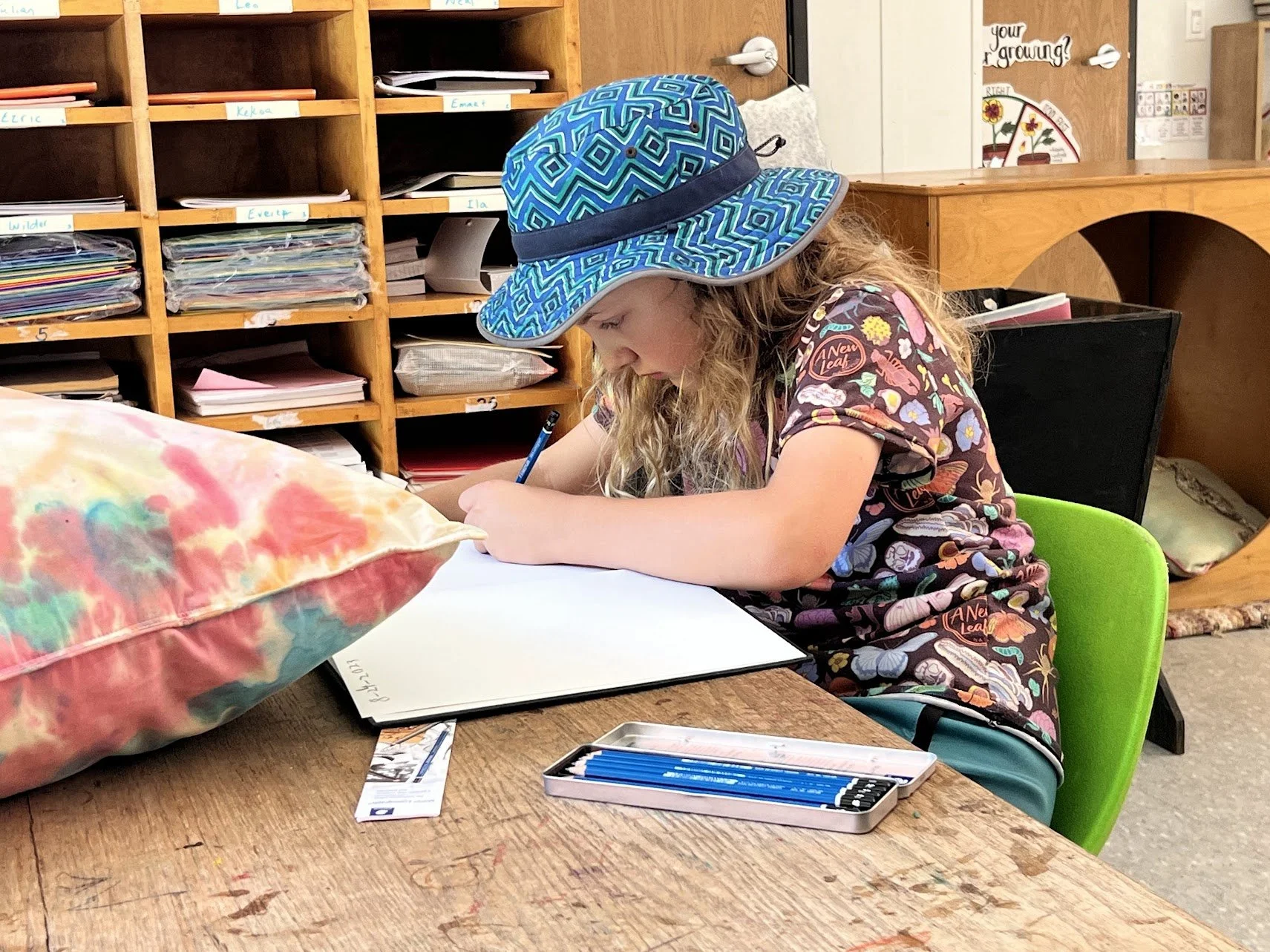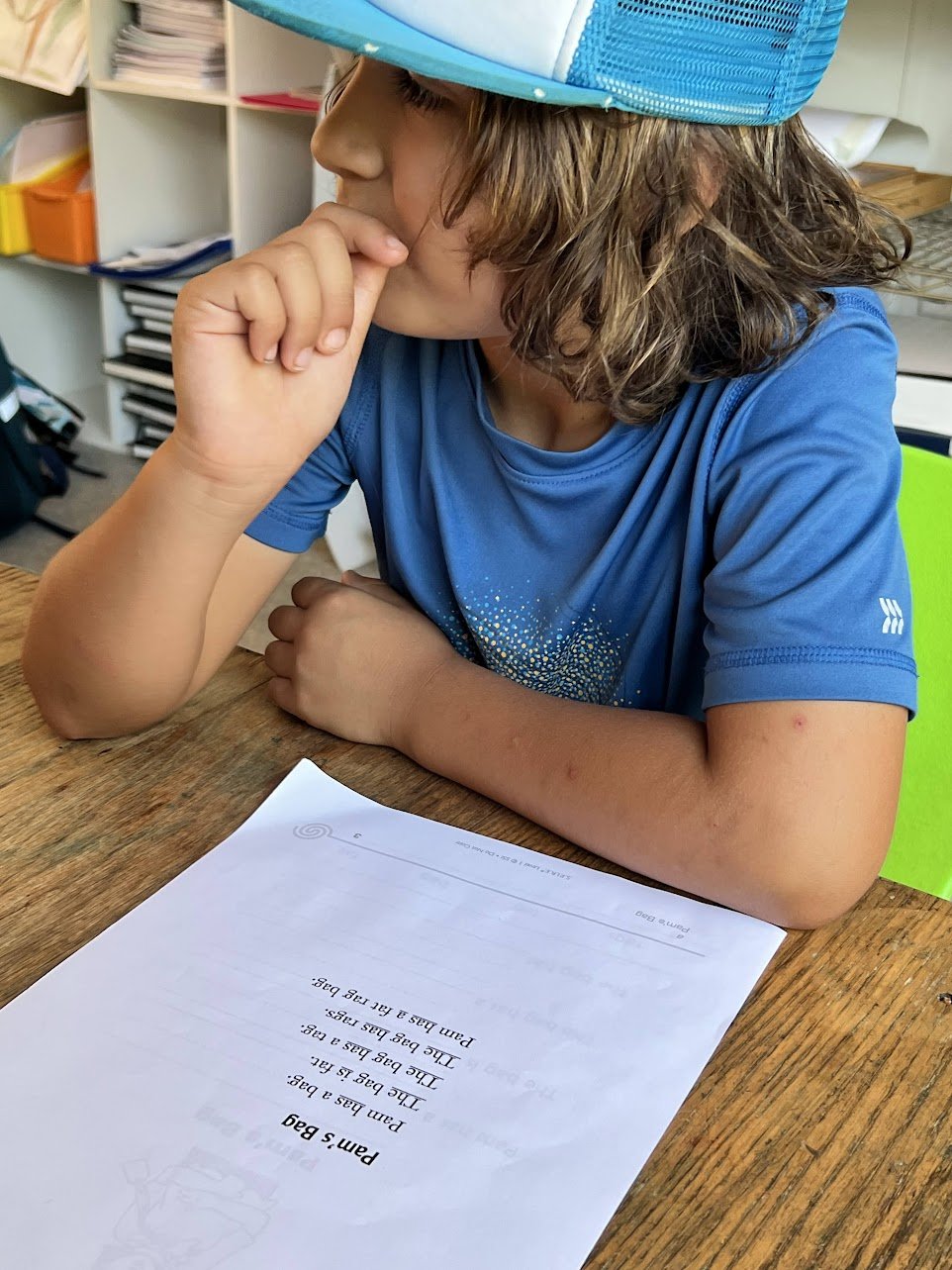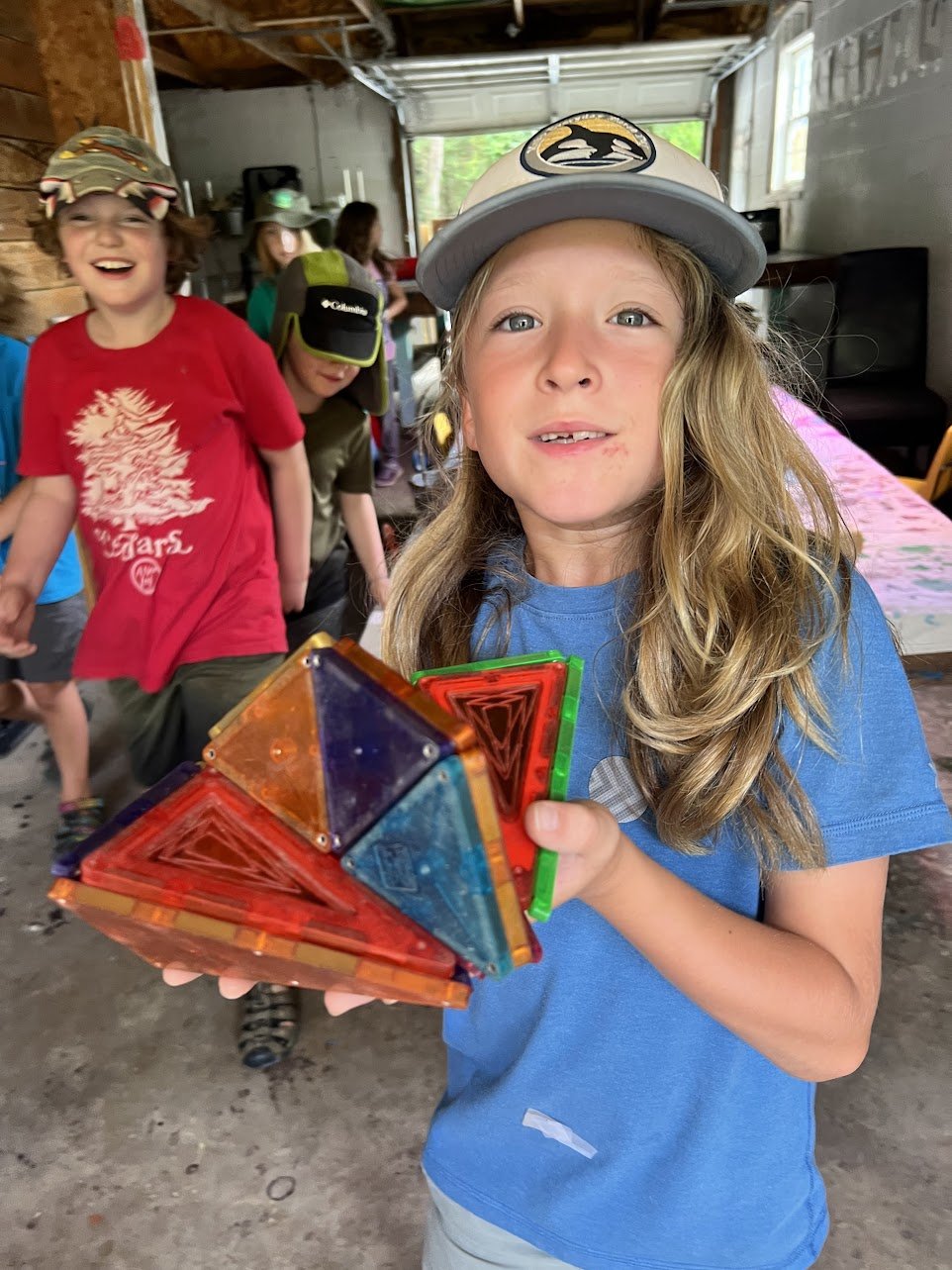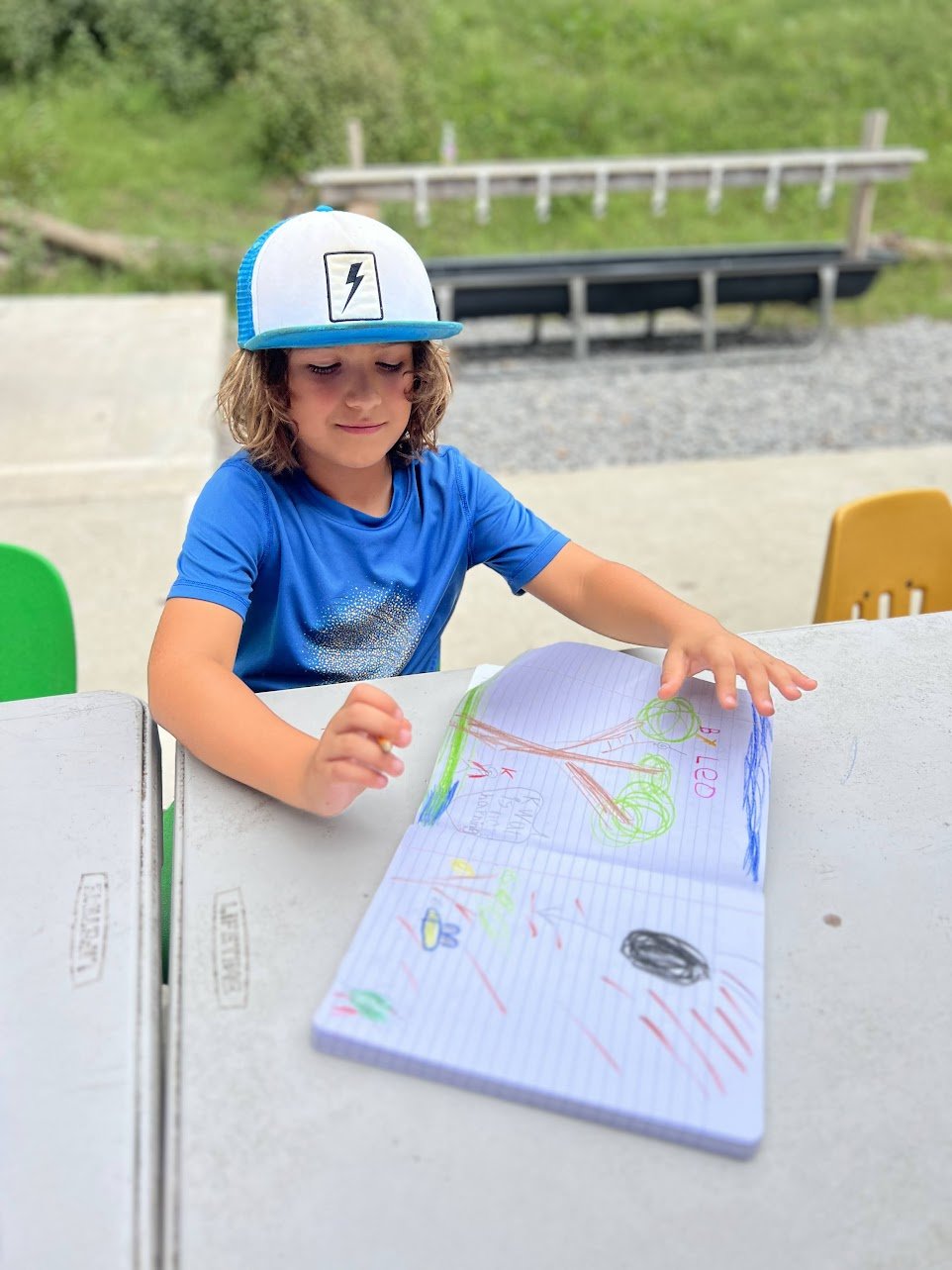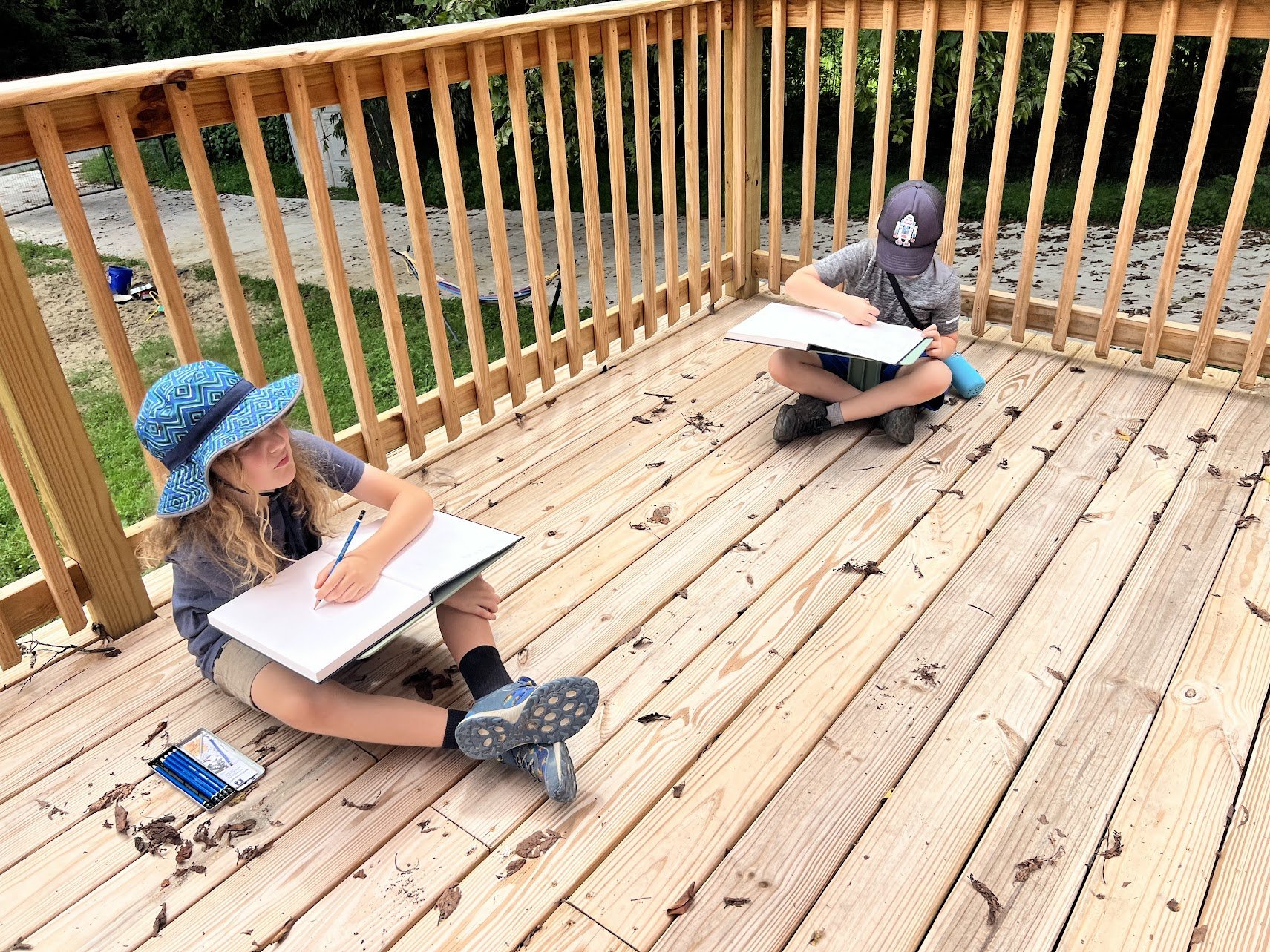Elementary Education
now Accepting applications for
1st grade students
2024-2025 school year
We are lifelong learners
At A New Leaf, we believe in the value of play and learning by exploration, which we combine with things that must be learned explicitly. While storytelling comes naturally, writing does not. We love to discover many mathematical ideas in nature, and we want to record these on sheets, and in tables and graphs. These are reasons why we also teach the application and abstraction of those ideas on paper. Our days are balanced between explicit and inquiry-based learning.
Each moment that we spend nature journaling in the gardens and forest, or creating a research project about our farm animals and plants, it is supported by small-group explicit phonics instruction rooted in the Science of Reading. Each moment tallying treats for the goats or measuring the biodiversity of our 10-acre classroom is followed by a concrete-representational-abstract sequence during math small groups. We use curricula and philosophies as tools, not teachers and we weave them together with this goal: for each child to thrive. In addition to our emergent curriculum based on lines of inquiry, state standards, and student interests, we use Heggerty Phonemic Awareness, Tennessee Foundational Skills, Orton Gillingham Literacy Approach, Secret Stories® (referred to as Sound Stories in our space), The Rhythm of Handwriting (HWWT), Singapore Math, Montessori materials, podcasts, Saxon math, and Wild about Learning.
We mold our materials to the specific needs of individual students in our class. In few other schools can you see the amount of one-on-one and small-group learning that occurs in our space.
The Shape of the Emergent Curriculum
Our curriculum emerges from three sources: 1-the lines of inquiry, 2- observations of our students’ zones of development, and 3- students interests and motivations.
The lines of Inquiry are the ideas and materials that teachers discuss during the in-service weeks and that we present to the students at the beginning of the school year to inspire the emergence of the projects. They are the following:
Nature Literacy
Farm Economics
Ecological processes
Developing Naturalists
NASA explorations and other space efforts
The Elements, Physics and Chemistry
Seasonal, weekly, daily weather patterns
Sounds, Voice, and human languages
Our story from today, and backwards through historical timeline
Tools, Culture, and music
Sustainability and organic practices
Consent, Relationships, Responsibilities, Safety, and Mutual Respect
Examples of projects
Goat training
Our goat training project shows how we weave mathematics with social emotional learning in challenging herd dynamics. Children engage and form cross-species relationships, while learning patience, problem solving, perseverance, consistency, and leadership, to bring goats to respond to commands and follow directions.
shiso
On our farm, we have a substantial amount of wild shiso growing every year. An ongoing project involves identifying the distribution and density of shiso patches on the land, harvesting shiso, hanging it to dry, then processing and packing it to sell as shiso tea in our school farmer’s market. We spend a good proportion of our time interacting mathematically with this plant as we estimate the population size, weight wet and dry materials, and compute the cost of goods sold and profits from sales.
